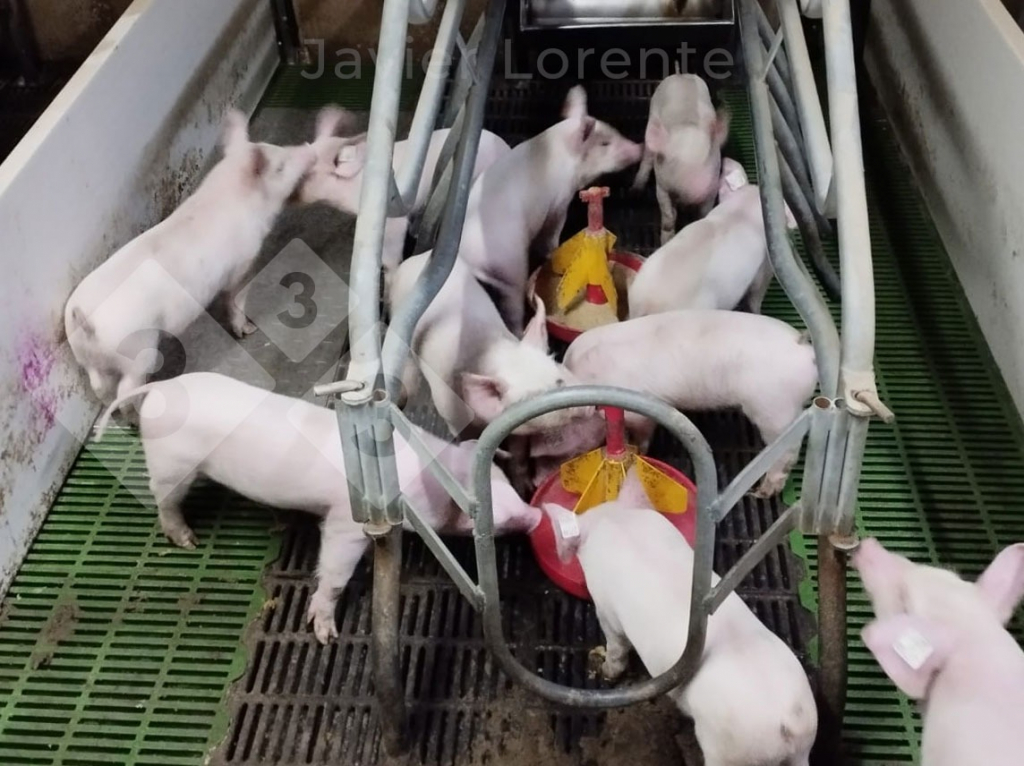Weaning: The importance of the process
01-Sep-2025 (ago 3 months 14 days)
In the first article of this series, we reviewed the objectives that must be met in the farrowing room in order to achieve successful weaning. The keys are:
- Piglets receive sufficient colostrum from their mother.
- Piglets eating an adequate amount of feed in the farrowing room.
- Piglets with a minimum weight of 6-6.5 kg and 26-28 days old, never less than 24 days old.
You can review the complete article here: Weaning well starts "before weaning"
With these key points achieved, the weaning process itself will be fundamental in minimizing the risk of problems later.
The weaning process
Our objective must be to reduce both physical and thermal stress on the piglets and provide them with optimal conditions as soon as possible for a proper start in the nursery.

Today we have proven that if we leave the piglets in the farrowing room for a week after removing the sows, and do not subject them to all the other stress associated with weaning, we reduce subsequent diarrhea problems. This is unfeasible on many of our farms, but it shows us that by reducing stress at this time, we reduce the risk of problems.
What are the keys to reducing piglet stress during the weaning process?
1. The facilities at the source and destination farms
- The farrowing room should have installations that allow us to easily open the gates and remove the piglets without complications.
- There should be suitable aisles prepared with gates, to be able to make the weaning and subsequent reception at the destination farm as fast as possible and with the least stress on the piglets.
- Weaning is usually done early in the morning and in many cases when the outdoor temperatures is very cold. If piglets have to be moved, it is important to design the loading docks well, to facilitate the loading and unloading process and to prevent the piglets from getting cold.


2. The transportation
- If piglets need to be moved by vehicles, they must be prepared to move small piglets:
- Windows that close completely to keep out the cold.
- Adequate flooring. Especially on the ramps or hydraulic lifts where small piglets can have problems.
- Always have sawdust or something similar to provide comfort to the piglets.
- Minimize piglet transport time whenever possible: It is important to have a good animal flow design, which allows us to move piglets to nearby farms.

3. Management and personnel in charge of each movement
To reduce piglet stress at weaning, proper piglet management is paramount. To have this we must:
- Reduce piglets' fasting time after removing the sow to prevent the most voracious piglets from consuming in excess at arrival:
- It is recommended that piglets have creep feed in small quantities up until they are loaded as they previously had.
- Piglets must have water at all times up to the time of loading.

- Weaning causes stress which decreases immunity; therefore, we must avoid any process (such as vaccinating) which can add more stress or cause fever. Thus, we must:
- Review vaccination programs and adjust them if necessary.
- Consider the use of treatments, e.g. antipyretics, to help reduce this effect.
- Transport and/or load piglets into the truck if necessary, "slowly but surely." This requires well-trained and committed personnel who understand the importance of the process.
- Adapt movements and transfers according to the optimal times of the day depending on the time of year. We are set on doing weaning movements at very early hours of the day with optimizing other variables in mind, but has anyone thought about whether the ideal time for a 6-kg piglet is to be moved at 6:00, 7:00, or 8:00 AM, at temperatures often below 0ºC?
- Once the animals arrive at the destination farm and are unloaded, they must be placed at their final destination as soon as possible:
- Separating males and females if it is the case.
- Separating them by size if it is the case.
- Leaving the appropriate number of piglets per pen.


- Whatever procedure is done, it must happen WITHIN THE FIRST FEW HOURS, otherwise:
- Piglets may end up fighting more than once.
- Excessive stress is caused due to high density.
- The vast majority of piglets won't have access to the feeder or drinker.
Of course, everything must be prepared at the destination to receive the animals, but we will talk about this in detail in our next article.
